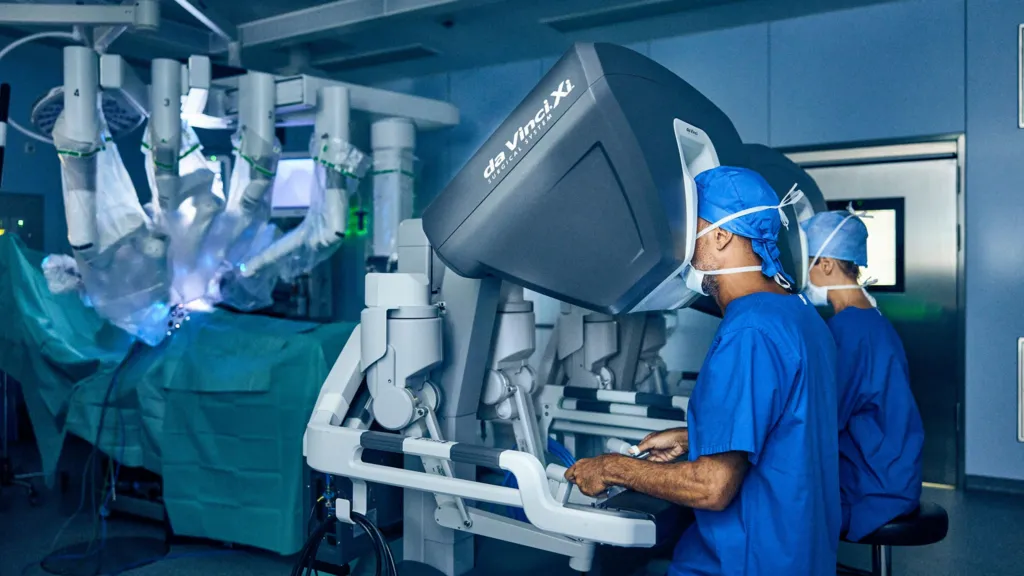
Benefits of Robotic Surgery for Head and Neck Cancer Patients
Robotic surgery has transformed the approach to treating complex cancers, including head and neck cancers. It offers precision, reduced recovery time, and enhanced outcomes, making it an excellent option for many patients. As more surgeons worldwide adopt this innovative technology, patients suffering from head and neck cancers can access safer, less invasive, and more effective treatments. In particular, experts like Dr. Amit Chakraborty, an oncologist specialist in Dubai, Mumbai, and Nagpur, are leading the way in advancing robotic-assisted surgical techniques for head and neck cancer treatment.
1. Minimally Invasive Procedure
Robotic surgery is a minimally invasive procedure that provides surgeons with enhanced control and precision during operations. Unlike traditional surgery, which often requires large incisions, robotic surgery for head and neck cancer patients involves smaller cuts, minimizing tissue disruption and reducing scarring. The robotic system provides a magnified 3D view, allowing the surgeon to operate with utmost precision. For head and neck cancer patients, this approach leads to less trauma to the surrounding structures, an essential aspect given the delicate anatomy of this region.
2. Greater Precision and Control
Robotic surgery uses advanced technology, such as robotic arms that mimic the surgeon’s hand movements, allowing for complex maneuvers with precision. This precision is particularly beneficial for head and neck surgery, where the presence of critical structures like nerves, blood vessels, and muscles requires meticulous handling. The surgeon can navigate tight spaces and perform intricate procedures without compromising nearby structures. This precision directly contributes to improved outcomes and lowers the risk of complications for head and neck cancer patients.
3. Reduced Risk of Complications
Complications during and after surgery are a primary concern for any patient undergoing treatment. Robotic surgery has been shown to significantly reduce the risk of complications, particularly for cancers in sensitive areas like the head and neck. By minimizing blood loss and reducing the likelihood of infection, robotic-assisted procedures allow patients to recover faster and with fewer complications. Furthermore, because robotic surgery is minimally invasive, there is a reduced risk of nerve damage, which is crucial for preserving essential functions such as speech and swallowing.
4. Enhanced Recovery and Shorter Hospital Stays
The minimally invasive nature of robotic surgery leads to faster recovery times, allowing patients to leave the hospital sooner than they would with traditional surgery. For patients undergoing head and neck cancer treatment, this means less disruption to their lives and quicker resumption of their daily activities. Shorter hospital stays also reduce the risk of hospital-acquired infections and make the overall treatment journey less burdensome. The quicker recovery and improved outcomes contribute significantly to a better quality of life for patients.
5. Preservation of Vital Functions
Head and neck cancers often affect areas essential for basic functions such as eating, breathing, and speaking. Traditional surgery can sometimes compromise these functions, impacting a patient’s quality of life. Robotic surgery enables surgeons to approach tumors from different angles, allowing them to remove cancerous tissues while preserving vital structures. With the support of robotic technology, head and neck cancer specialist like Dr. Amit Chakraborty can focus on function-preserving techniques that help patients maintain a good quality of life post-surgery.
6. Better Surgical Outcomes
The accuracy of robotic surgery not only allows for efficient tumor removal but also increases the likelihood of successful long-term outcomes. By precisely targeting and removing cancerous tissues, robotic surgery improves the chances of complete cancer removal, which is essential for reducing the risk of recurrence. For patients undergoing head and neck cancer treatment, these enhanced outcomes provide peace of mind and greater confidence in their recovery.
7. Reduced Pain and Need for Pain Medication
Due to smaller incisions and less tissue disruption, patients often experience less pain after robotic surgery. This benefit is particularly important for head and neck cancer patients, as traditional surgery in these areas can be highly painful. By minimizing discomfort, robotic surgery reduces the need for strong pain medications post-operatively, which can have various side effects. This approach makes the recovery phase smoother, less stressful, and more manageable.
8. Improved Visualization for Surgeons
Robotic systems provide high-definition 3D visualization, allowing surgeons to see beyond the limitations of the human eye. This enhanced view is especially beneficial in head and neck surgery, where the presence of small, delicate structures requires detailed visualization. Improved visibility means that surgeons can better differentiate between healthy and cancerous tissues, ensuring complete tumor removal while preserving surrounding healthy tissue.
9. Applicable for Advanced and Complex Cases
Robotic surgery is highly suitable for advanced and complex cases, where traditional approaches might fall short due to anatomical limitations. For head and neck cancer patients with tumors located in hard-to-reach areas, robotic-assisted techniques offer a viable solution. Dr. Amit Chakraborty, a head and neck cancer specialist in Dubai, Mumbai, and Nagpur, is skilled in using robotic systems to handle complex cases, providing hope to patients who may not have had viable treatment options otherwise.
10. A Boost in Psychological Well-being
The minimally invasive nature, shorter recovery period, and functional preservation achieved through robotic surgery all contribute to an enhanced psychological outlook for patients. Head and neck cancer patients often face a range of challenges related to appearance, functionality, and social interaction. With robotic surgery’s precision and focus on reducing physical and functional impacts, patients experience fewer emotional and psychological disruptions. The ability to retain appearance and basic functions positively impacts a patient’s self-esteem and mental well-being, making the overall journey of recovery less daunting.
Conclusion
Robotic surgery offers several significant advantages for head and neck cancer patients. By ensuring precision, reducing complications, and preserving essential functions, robotic-assisted surgery represents the future of head and neck cancer treatment. With experts like Dr. Amit Chakraborty, oncologist specialist in Dubai, Mumbai, and Nagpur, driving advancements in robotic surgery, patients can rest assured that they have access to world-class care that emphasizes both successful outcomes and quality of life. For those exploring treatment options, consulting with a qualified head and neck cancer specialist experienced in robotic surgery could be a step toward a safer, more effective cancer treatment journey.
